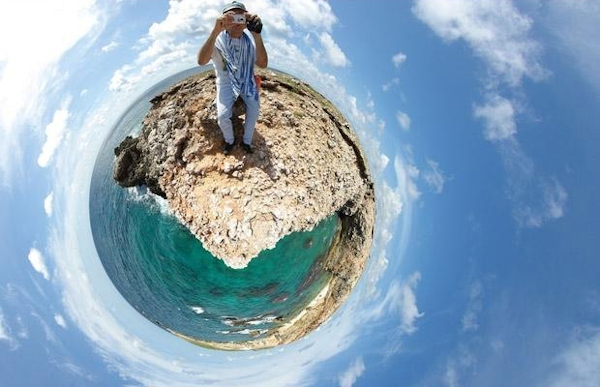[From 3DTV.com (important note: as of September 22, 2011 the original post at 3DTV is infected by a Trojan Horse)]
MIT Develops a Panoramic 3D Motion Picture Camera System
By Mike Lata on September 19, 2011
MIT continues to show interest in 3D technology in film; and has just developed a camera rig that aims to completely immerse viewers into the picture. The reason it offers such immersion is that 3D pictures being filmed with this camera will have 360-degree stereoscopic 3D. This will allow images to appear all around viewers. What is also interesting about this new camera rig is that it has been (at leas partially) funded under NASA.
“School Safety Summit announced today that a new panoramic 3D motion picture camera rig developed at MIT under 2 NASA contracts, and capable of producing stereoscopic 3D cinema spectacles that completely surround the audience, will be tested by Colorado education leaders and community partners to visualize the schools of tomorrow,” according to a press release from Market Watch.
Technology that will allow stereoscopic 3D to completely surround us and offer 360-degree action sounds truly intense. Is this the virtual reality we have been waiting for to hit cinemas? I mean, imagine intense action movies with gun bullets blazing all around us. Sounds like fun, actually.
According to the press release, the way this stereoscopic 3D camera kit works is that it is composed of multiple cameras with the aim to generate high-res images with a wide FOV database. This is done in order for images to be combined in real time. It was invented by Eric Prechtl, Ray Sedwick and Eric Jonas.
The stereoscopic 3D produced with this kit allow viewers to look around corners of 3D images; and above or below them. It allows for a full panoramic (wide-angle) view.
“New image blending techniques take image data that is transmitted wirelessly and provide an extended panoramic view in which the combined images form a full circle, or movie cyclorama. Images can also be combined so that the cycloramic view extends upwardly or downwardly to create a continuous, unobstructed, omnidirectional image that extends a full 4 pi steradians,” the press release states.
The School Safety Summit’s 3D Task Force invites film makers, producers, and others related to the 3D film industry in order to examine the kit and its possibilities. The task force wants professionals to utilize it in film to its full advantage.
Besides individuals in the film industry, the kit has potential implications in NASA.
“An obvious application for NASA is the control of robots on planetary surfaces to collect samples or build permanent structures,” according to the press release.
Schools can also take advantage of this kit by utilizing it for hazard safety reasons, as an example given by the press release. However, I imagine more educational solutions to also be apparent from such technology. Maybe simulating a certain environment while studying geology? Or how bout simulating the solar system when studying astronomy? The implications could be endless in using full 360-degree stereoscopic 3D in an educational setting.
In terms of drawing the audience closer to the film, is this sort of 3D technology bordering on augmented reality? It seems the two techs are getting closer together since they both offer a way to bridge the gap between the viewer or user and the medium.
There are many other uses for the tech outlined by the report, such as using it for remote viewing or monitoring. I really think entertainment like film, television, and gaming is where it will truly shine. It may also pave the way for augmented reality, 3D and virtual reality to converge.
If you are an individual who represents an organization that can make use of this camera rig’s capabilities, go here to sign up for an orientation. The press release did not specify what this actual camera system is called so far. However, I think it is safe to assume we will be hearing more about its implications for stereoscopic 3D tech as a whole and where it is heading.
